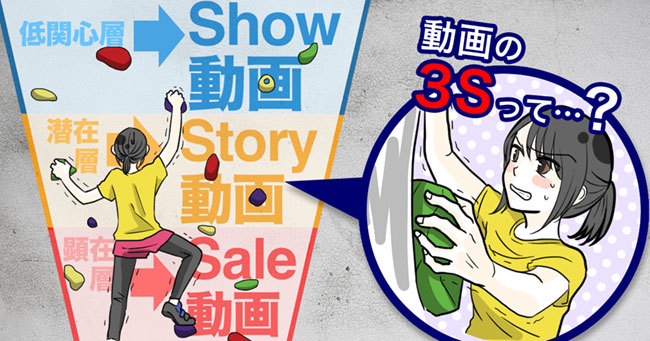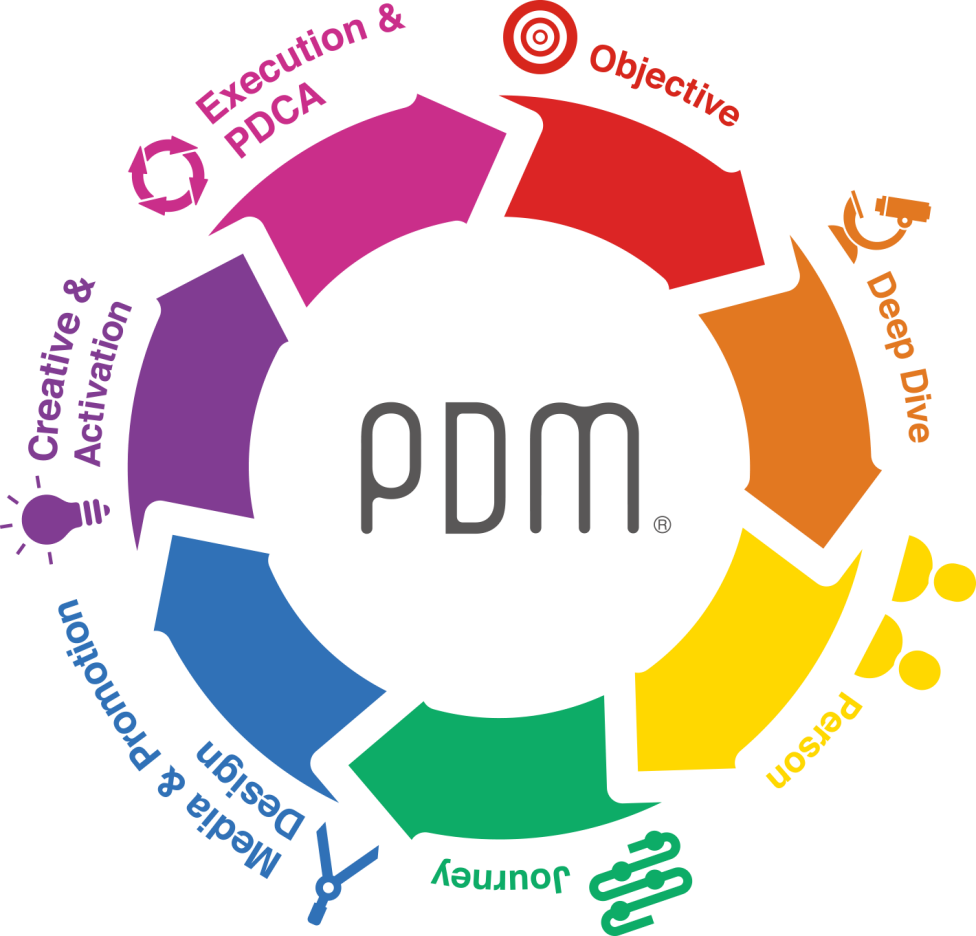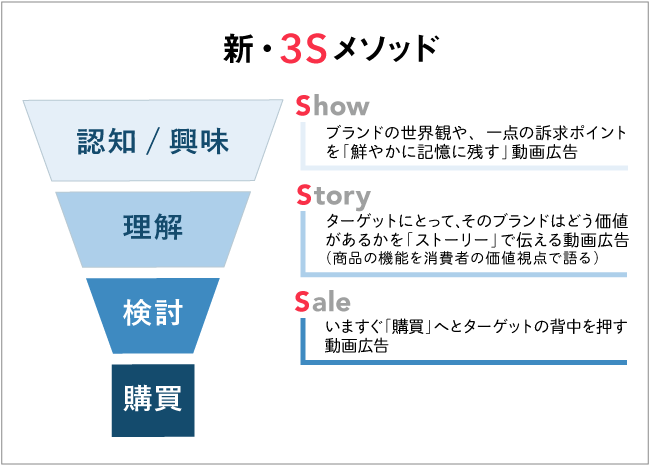
What's troubling Ms. A, who works at a sporting goods store? (Illustration: Saki Kanai)
This series introduces the concept of People-Driven Marketing (PDM). This installment's theme is "Creative & Activation" – creative work that moves people.

Within marketing, discussions about "creative" can often become confusing, intertwined with intuition and personal taste. But fear not!
PDM-style creative is manageable if you grasp three fundamentals: "Optimization for Media," "Organization by Funnel Stage," and "Data-Driven PDCA." Creative expression can be made even more powerful.
<Table of Contents>
~Ako's Story: Creative & Activation Edition~
In the suburbs of a certain town stands the large sporting goods store "Sports People." Ako, in her sixth year at the company, handles media planning to deliver messages to Sports People's customers ( see previous installment ).
The problem lies with the creative. The advertising department has already produced a TV commercial featuring footage of local amateur baseball teams and corporate futsal teams sweating it out on the field. The advertising manager suggests, "Why not run this commercial on digital media too?" but Ako has her doubts.
"It works for TV, but if this video pops up online, won't people just skip it?"
Additionally, Sports People has been focusing on its popular bouldering gear section lately. Ako, who just started bouldering herself, feels this way:
"Even if they see this baseball and futsal commercial, people who like bouldering probably won't come to the store..."
She's also concerned about search ads and banner ads. Currently, they only show banner ads to people searching for "Sports People," and the banner design is just the "Sports People" logo. Is this really sufficient?
"We should really be making better use of the delivery results data."
To devise more effective creatives, Ako once again turned her attention to the data.
Fundamental Principle ①: Optimize creatives for each media!
This is Namikawa from Dentsu Digital Inc. Today, I'll introduce the methodology of Dentsu Digital Inc. Advanced Creative Center, which develops creative methods and solutions leveraging data.
As Ako suspected, it's common for viewers to skip ads that work well on TV but appear as video ads on digital media like SNS or video sites.
TV commercials air in the living room, naturally catching viewers' eyes. This is sometimes called a "passive viewing attitude." On the other hand, with digital media where viewers can skip content at will, something is needed to encourage a more "active" viewing experience.
In other words, it becomes necessary to either "create separate video ads tailored for digital media" or "edit the same footage differently from the TV commercial."
This is what we call "creative optimization for digital media."
Last year, Dentsu Inc. analyzed data from over 3,000 past YouTube video ads. They investigated the "creative elements" within these video ads and the impact they had on viewers. They uncovered the relationship between these creative elements and metrics like "viewing rate," "ad recall rate," and "brand awareness rate."
For example, to increase "view rates"—meaning to prevent skipping—creative elements like the following were found to be highly effective. (These are just a few examples)
~Examples of Trends in Creatives That Aren't Skipped~
- Includes a dance scene.
- Features a dog.
- Includes a numerical claim.
- The product appears within the first 3 seconds.
Seeing this, don't you notice that there are elements that "are tied to the concept itself and can't be easily changed," and others that "can be incorporated later through editing"?
① Elements tied to the core concept
Elements like "a dance scene" or "a dog appears" are integral to the concept itself. If you're creating only digital video without a TV commercial, you can use this data as reference for your concept. (Of course, what you need to communicate is crucial, so just randomly including a dance scene or a dog won't work.)
② Elements that can be added later during editing
On the other hand, elements like "making a numerical claim" or "showing the product within the first 3 seconds" are things that can be added during editing. If a TV commercial already exists, simply creating a separate edit for the digital video can be effective.
Note that the necessary creative elements vary depending on the desired response—whether it's boosting "viewership ratings," "ad recall," "brand awareness," "favorability," or "purchase intent." Additionally, these elements can influence each other.
Considering these points, Dentsu Inc. and Dentsu Digital Inc. have developed a tool called "Brand Lift Checker" that simulates viewer responses to digital video ads. For details, please refer to the article below!
Dentsu Inc. and Dentsu Digital Inc. Launch "BRAND LIFT CHECKER" Service to Optimize Video Ads for Mass and Digital Media from a Creative Perspective
Fundamental Principle ②: Approach Video with a "3S Strategy" for Each Funnel Stage
Ako's next insight was: "With this ad content, there might be people who don't feel personally connected to it."
In other words, even if TV commercials and web videos increase awareness, many people might think, "I know the store name because they run ads, but it's not for me."
These people are the "potential layer" in the middle of the customer funnel.
Simply put, they are people who "know about the product but don't have enough interest to search for it themselves."
Getting this segment to personalize your products or services is precisely the essence of PDM.
There are several methods, but two commonly used approaches are using video ads and directing users from banners or media tie-ins to landing pages.
First, the "personalization" approach using video ads. The "video" here differs from the "TV commercials and digital videos for broad awareness" mentioned earlier. It is specifically "video for personalization."
At Dentsu Digital Inc., we organize video ads into a framework called "3S" based on this difference in purpose.
The "3S" of Video Advertising
■Show……Videos for broadening awareness
■Story……Videos designed to encourage personalization
■Sale……Videos to encourage purchase
Remember them as Show, Story, Sale from the top of the funnel. Show targets the top funnel, Story targets the middle funnel, and Sale targets the bottom funnel.
Story videos are essential for personalization.
For example, a narrative video featuring someone new to bouldering as the protagonist, showing how the shop supports them.
The same principle applies when using banners or media tie-ins to personalize the experience and drive traffic to a landing page.
For instance , display a banner using bouldering visuals to capture the interest of those curious about bouldering, then guide them to the landing page.
On the landing page, prepare useful content like a "Bouldering Beginner's Guide," and introduce the product within that context. That's the approach.
Incidentally, based on my experience, Story videos tend to be more emotionally resonant when created by someone who already feels personally invested in the product.
It makes viewers think, "Oh yeah, I totally get that feeling," right?
This is where Ako, the bouldering enthusiast, gets to show off her skills.
Fundamental Principle ③: Apply data-driven PDCA to creative content too
Ako's third concern was about search ads and banner ads.
For example, someone looking to buy a baseball is likely searching for terms like "baseball ball." It's a waste to just show them a banner with a big brand logo.
Instead, approach them with listing ad text or banners that resonate with "people searching for baseball balls."
Wouldn't an expression like "Oh no! I'm running out of baseball balls! What should I do?" resonate more than just prominently displaying the "Sports People" logo?
And crucially, apply the PDCA cycle to your creative work. Whether it's banners or video ads, test multiple variations. Analyze the post-delivery data to verify results and refine your messaging for better performance.
The key metrics to track when running PDCA cycles differ for each of the 3Ss.
- Show... For video ads aiming to boost awareness, look at "View Count" and "Brand Awareness Rate"
- Story... For video ads aiming to make viewers feel personally connected, look at "favorability."
- Sale… For banners aiming for direct purchases, look at "click-through rate" and "conversion rate"
The key point is to "set performance metrics according to the role of each creative."
Finally. In the past, the creative production process often involved agonizing over "Which is better: Option A, B, or C? Hmm..."
But going forward, we can explain and discuss things more clearly: "Because this is the medium, the video should be done this way," "Because this is this layer of the funnel, this creative works best," "Because the results showed this data, this expression will be better next time."
Of course, this alone doesn't create the creative itself. Beyond this lies the realm of expression and ideas. The foundation for making those expressions and ideas soar higher— —becomes more solid and stronger. That's what I believe PDM-style creative is.
Ako Discovers the Appeal of Impactful Creative
Ms. A created a digital video ad using TV commercial footage but with a different edit. She changed the opening to an impactful scene to prevent skipping. This successfully boosted awareness, especially among younger audiences, which the TV commercial hadn't reached.
She also created a special video ad that resonated deeply with the rapidly growing community of bouldering enthusiasts. As a result, sales at the store's bouldering corner—an area they've been focusing on—increased by 20% compared to the previous month.
Moreover, by meticulously setting search keywords by category—like "baseball ball"—and creating distinct banners for each, e-commerce sales skyrocketed. She continues refining these efforts daily.
At first, Ms. A thought, "Creative work seems tough!" But by creating while analyzing data, she began to feel a tangible impact. It seems Ms. A has discovered the appeal of "creative work that connects with each individual and delivers tangible results."










